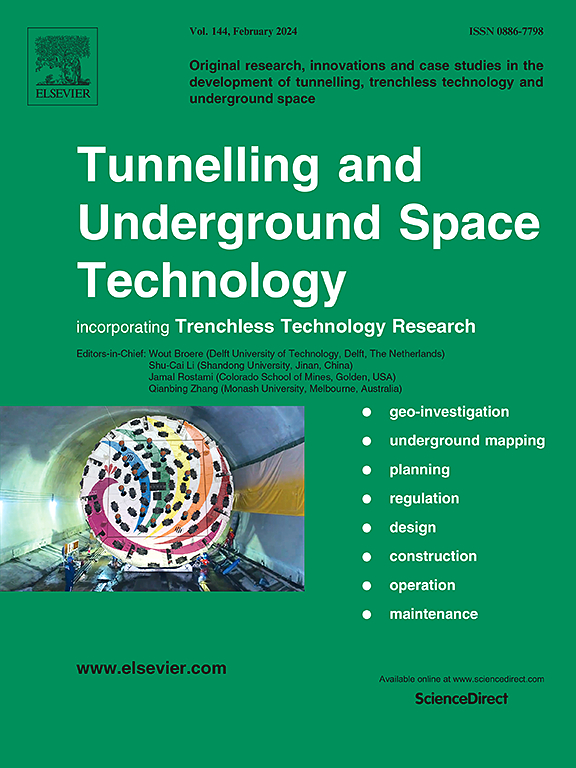基于聚类的集成学习方法在岩爆长期风险预测中的应用
IF 6.7
1区 工程技术
Q1 CONSTRUCTION & BUILDING TECHNOLOGY
引用次数: 0
摘要
准确预测长期岩爆风险是保证地下开挖安全的关键。在本研究中,利用分层(BIRCH)和随机森林(RF)算法结合平衡迭代约简和聚类,建立了基于聚类的集成学习(CEL)模型来预测岩爆的长期风险。收集了259个历史岩爆案例,采用6个指标验证了CEL-RF模型的可行性。为了提高模型的可靠性,结合贝叶斯优化(BO)和五重交叉验证(CV)方法来搜索最优的RF分类器超参数和权值。通过五个指标(准确率、Cohen’s Kappa、精度的宏观平均、召回率和f1分数)对模型的综合性能进行比较和评估。结果表明,CEL-RF模型的预测精度为0.885。应用CEL-RF模型对4个地下金矿岩爆风险概率进行了预测,结果与现场情况吻合较好。Shapley加性解释(SHAP)方法表明,弹性能指数Wet是最重要的指标。综上所述,CEL-RF模型是一种很有前景的岩爆风险长期预测模型。本文章由计算机程序翻译,如有差异,请以英文原文为准。
A novel cluster-based ensemble learning method for long-term rockburst risk prediction and its application
Accurately predicting the long-term rockburst risk is essential to ensure the underground excavation safety. In this study, a cluster-based ensemble learning (CEL) model was developed by aggregating balanced iterative reducing and clustering using hierarchies (BIRCH) and random forest (RF) algorithms to predict the long-term rockburst risk. A total of 259 historical rockburst cases with six indicators were collected to verify the feasibility of the proposed CEL-RF model. To improve the reliability of the model, the Bayesian optimization (BO) and five-fold cross validation (CV) approaches were combined to search the optimal hyperparameters and weights of RF classifiers. The comprehensive performance of models was compared and evaluated by five metrics (accuracy, Cohen’s Kappa, macro average of the precision, recall and F1-score). The results indicated that the CEL-RF model performed best with the accuracy of 0.885. In addition, the CEL-RF model was applied to predict the probability of rockburst risk in four underground gold mines and the results were consistent with the field conditions. The Shapley additive explanations (SHAP) method revealed that the elastic energy index Wet was the most important indicator. Overall, the proposed CEL-RF model is a promising model for long-term rockburst risk prediction.
求助全文
通过发布文献求助,成功后即可免费获取论文全文。
去求助
来源期刊

Tunnelling and Underground Space Technology
工程技术-工程:土木
CiteScore
11.90
自引率
18.80%
发文量
454
审稿时长
10.8 months
期刊介绍:
Tunnelling and Underground Space Technology is an international journal which publishes authoritative articles encompassing the development of innovative uses of underground space and the results of high quality research into improved, more cost-effective techniques for the planning, geo-investigation, design, construction, operation and maintenance of underground and earth-sheltered structures. The journal provides an effective vehicle for the improved worldwide exchange of information on developments in underground technology - and the experience gained from its use - and is strongly committed to publishing papers on the interdisciplinary aspects of creating, planning, and regulating underground space.
 求助内容:
求助内容: 应助结果提醒方式:
应助结果提醒方式:


